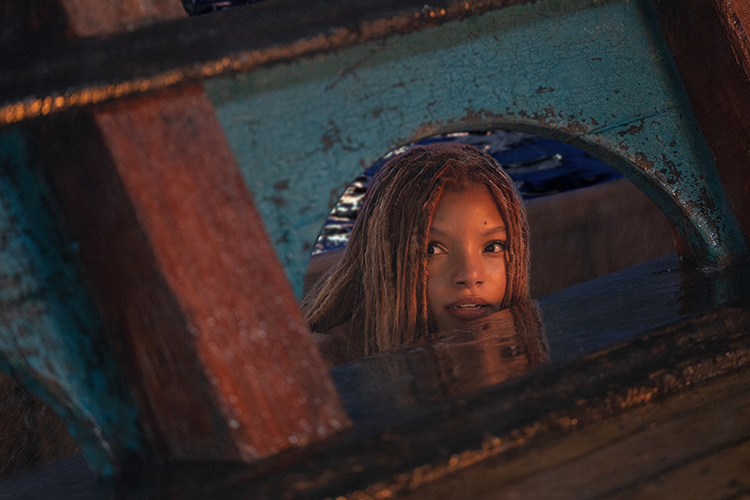Disney’s latest live action re-make of an animated classic marks a return to the cinema, opening the door for large scale spectacular scenes and favourite songs from the original. And it comes with a cast that combines Halle Bailey showing off her powerful pipes, Melissa McCarthy acting with tentacles and Daveed Diggs and Awkwafina loaning their voices to CGI characters.
Its director, Rob Marshall, is enthusiastic about audiences having the chance to see it on the biggest of screens…
People have grown up with the original film and love it so much. Now you’re bringing them something different. How do you balance their expectations and nostalgia with a new approach?
It really is the balancing act of two worlds. I’m a fan of the original too, so I know what the bones are and what you really need to hold on to, but I also saw an opportunity because we’re in the live action genre, to deepen the film, expand it, to make it a fuller experience and make it more emotional. This is something you can’t do with an animated film, so I went back to the original Hans Christian Andersen tale because I wanted to understand where it came from and what it was trying to say.
I loved that it sounded like a modern story about a young girl who feels displaced, who doesn’t feel that she fits in and wants something else from her life and isn’t afraid to build a bridge to a different culture and not be afraid of “the other”.
It felt very timely, in our increasingly divided world – it’s a wonderful reminder that we’re all one. That’s what I always look for – how can you bring a fuller, deeper experience of something.

It does feel very much like a version for the 2020s …..
We’re always going to see things through this lens. It’s 2023 so that is how we’re going to see this piece and I remember in 1989 it was very exciting and very new. But it also had a more traditional animation and it was simpler.
Ours is deeper in many ways. I love that Ariel connects to Eric in a more profound way. She really feels him and before she even sees him she hears what he’s talking about, she hears that they have a similar trajectory and they’re almost kindred spirits right from the beginning and she knows that. So I love that they connect in that way.
The film opens and ends with two spectacular sequences on the ocean. How did you go about making such large scale scenes, especially when it came to the water?
The opening scene on the ship was all done at Pinewood. It was done on a gimble which was three stories high. It’s a mechanism that makes the ship rock and move, but the ship was so massive it had to be so huge. And we used dump tanks and rain and water and spray.
My work on Pirates Of The Caribbean helped me a lot because I felt very comfortable in the ship world. With the finale, there’s the big battle at the end and a lot of that was done in tanks. It’s all in pieces.
The actual finale in the film was in Sardinia, so we could be on an actual beach. Any time I was able to film in a real place in this movie, I was so grateful. The actors didn’t have to pretend about what was around them and neither did I.

Those two scenes are wonderful on the big screen but what else about the film makes it so right for cinemas?
The whole immersive feeling of being under water in this movie is particularly special. We created a photo-real world and, with the technology we have, you actually feel like you’re moving through the space. It’s never stationery, you’re constantly moving and it’s an immersive experience.
I’m excited for people to eventually see it in 3-D and IMAX because that’s even more elevated and with Atmos sound you’re fully inside the world. I love that you can disappear into this fantastic world where mermaids exist, where crabs can sing and talk.
There’s also a reality above, on the surface, that she wants to be part of. It’s a fantastic experience.
The Little Mermaid releases in cinemas on 26th May.
